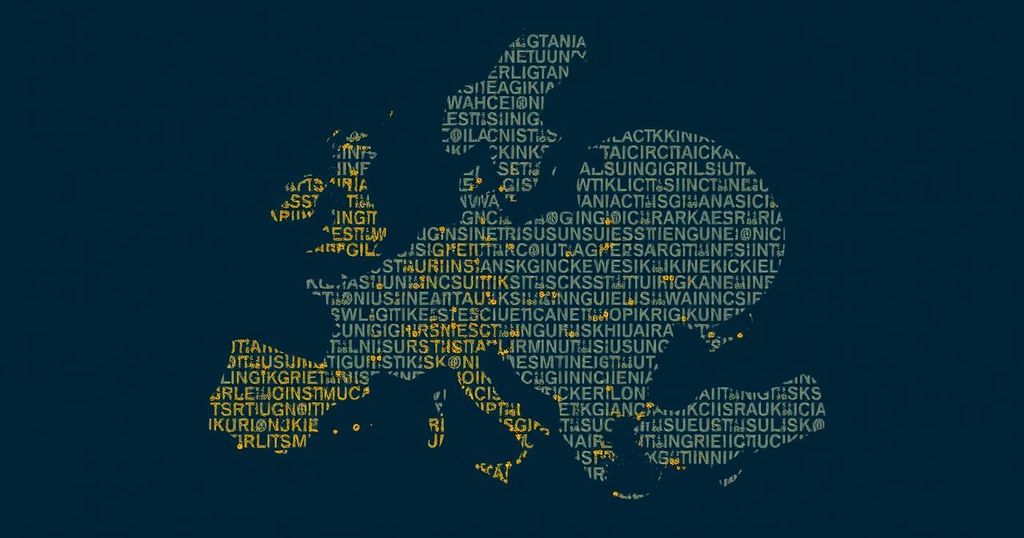Reflecting on my recent experience at AWE Europe in Vienna, I’ve discovered essential insights that highlight striking contrasts between it and its US version. While both events showcase groundbreaking XR technology and foster networking, AWE Europe proves smaller in scale, offering fewer exhibitors and less visibility. The discussions frequently surrounded challenges unique to the European XR scene, especially in securing funding and navigating regulations. Despite these differences, my journey was enriched by engaging conversations and a successful presentation, showcasing the potential of Europe’s vibrant yet burgeoning XR community.
Returning from my adventure in Vienna, where I attended the renowned Augmented World Expo (AWE) Europe, I find myself brimming with tales and insights to share. As I connected with fellow XR enthusiasts, the differences between AWE Europe and its US counterpart became vividly clear. AWE, now gracing its 15th iteration, stands tall as a pillar of XR events globally, attracting thousands of inquisitive minds and industry leaders alike, including giants like Meta and Snap. This year was no exception; the event delivered an exhilarating mix of tech revelations, networking opportunities, and memorable festivities. I reveled in reuniting with friends, forging new connections, and showcasing my own insights as a speaker—an important milestone in my journey as a consultant in the XR realm. Beyond the main event, I participated in a lively bowling night sponsored by Pico, enjoyed delightful meals, and even embarked on a visit to Cyberith to experience their cutting-edge hardware. However, amidst the excitement was a notable downside; AWE Europe felt smaller than its American sibling. With fewer exhibitors and attendees, it seemed at times like a petite version of something grand. This isn’t a reflection of the organizers’ efforts; rather, it’s a testament to the current XR landscape, with much of the momentum and investment heavily centered in the US. While AWE serves as a vibrant marketplace for finding innovative tech and meeting XR professionals, it’s also fraught with challenges for those of us who offer VR consultancy services. The conversation often turned repetitive, as attendees found themselves amongst similar service providers, leading to fleeting connections but limited opportunities. On the brighter side, AWE Europe proved to be a great platform for meeting lesser-known yet talented European innovators and discussing the unique challenges within this regional market. Our discussions circled around finding adequate funding for XR initiatives and navigating the maze of EU regulations that both inspire and hinder innovation. And yes, humor colored my experience as I adopted the American-style small talk yet met with puzzled glances—language and cultural nuances always presenting delightful challenges. Ultimately, my attendance was crowned by a successful presentation on “true mixed reality,” which attracted an engaged audience, further reminding me of the vibrancy still thriving in this sector. In sum, AWE Europe may not match the scale of its US counterpart, yet it offers a unique perspective and a chance to glimpse the burgeoning European XR scene. Here’s to hoping that next year brings even more innovation and enthusiasm to our side of the pond!
The Augmented World Expo (AWE) has established itself as a premier event for XR (Extended Reality) enthusiasts and professionals, showcasing innovations in augmented reality (AR) and virtual reality (VR). With its growing popularity, AWE has evolved to include significant editions in the US, Europe, and Asia. The event provides a platform for tech professionals, startups, investors, and analysts to network and discuss the latest advancements in XR technology. Each AWE event holds distinct characteristics, especially regarding attendee demographics and the scale of participation. While the US edition attracts major industry players and a broader audience due to the higher concentration of XR investments, the European version presents a different tapestry filled with local innovations and challenges. This disparity reflects the current state of the XR market, which is often viewed as US-centric. Understanding these distinctions is crucial for professionals looking to navigate and expand their presence in the global XR landscape.
My journey at AWE Europe illuminated the nuances between this European edition and its US counterpart. While I celebrated the intimate connections and vibrant dialogues with European innovators, I also recognized the challenges faced by those of us seeking opportunities in a still-developing market. With the spotlight predominantly on the US, the road ahead calls for greater collaboration and growth within Europe’s XR ecosystem. Encouragingly, forums like AWE not only illuminate these contrasts but also invest in building a future where European XR can thrive alongside its American counterparts.
Original Source: skarredghost.com

Leave a Reply